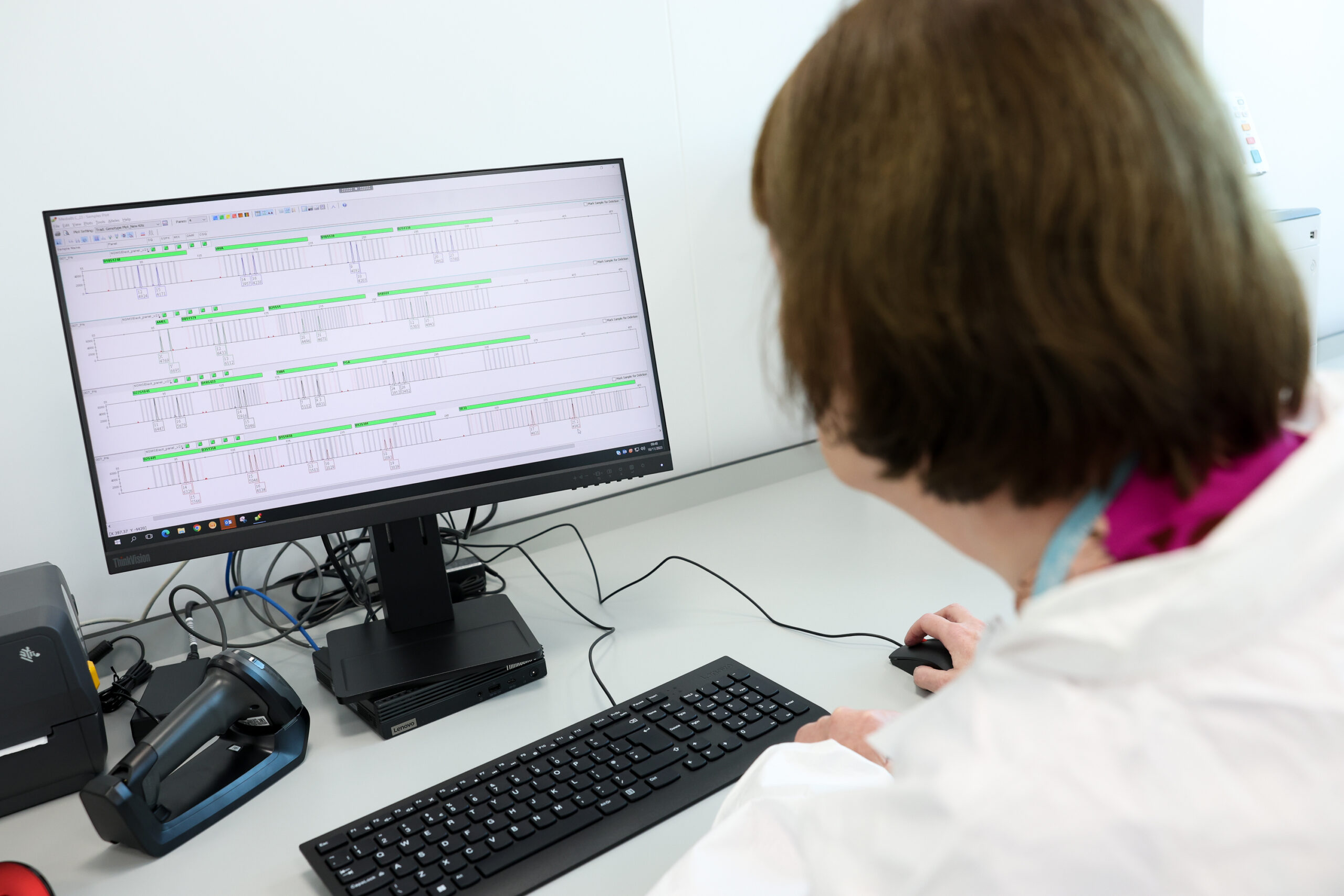DNA PROFILING
FSI employs a number of technologies to analyse DNA evidence.
Although each person’s DNA is unique to them, except in the case of identical twins, it is not practical to identify every difference between individuals when analysing DNA. In fact, in the majority of cases we look at 16 different regions of DNA when generating a DNA profile.
These 16 regions, represented by 32 of the peaks in a DNA profile, contain short repeating sequences known as Short Tandem Repeats (STR). The number of these repeating sequences is highly variable between individuals. The technique of DNA profiling is centred on analysing and measuring the differences in length of these STRs.
We also examine the gender indicator, which is represented as additional peaks which will be either XX or XY, that inform us if the DNA originated from a biologically female or biologically male individual.
This images shows the 16 regions and the gender indicator of a DNA profile being analysed by a scientist at FSI.
DNA profiles obtained from crime scenes or exhibits can be compared with reference DNA profiles from suspects or injured parties of a crime or uploaded and searched against the DNA profiles present on the national DNA Database System.
In certain circumstances FSI may employ alternate DNA profiling technologies.
In some cases, analysing 16 regions of DNA is not discriminating enough. This is the case when samples from close relatives are analysed which is frequently the case when body identifications are being carried out. In such cases additional regions of DNA are profiled which increases our ability to discriminate between different DNA profiles.
Y-profiling is a method of STR profiling that focuses only on variable DNA regions located on the Y-chromosome, which is inherited along paternal lines (fathers to sons). This method is useful when there is a female injured party and a male perpetrator. In such cases, traditional STR profiling might fail to identify a male DNA profile due to the male DNA being masked by the female DNA. Using Y-profiling small amounts of male DNA can be profiled from a sample with a high concentration of female DNA. This technology is particularly useful in sexual assault cases but has also been used successfully in murder and missing persons cases.
Mitochondrial DNA sequencing technology has been introduced to FSI and will be an important asset for the identification programme under the Institutional Burials legislation. Mitochondrial DNA is inherited along maternal lines by both biological males and females and it can be used to track ancestry through generations. As our cells harbour multiple mitochondria, this method of profiling can be very beneficial in degraded samples, such as from excavated bones. This technology has also proven useful in missing persons and criminal investigations.

